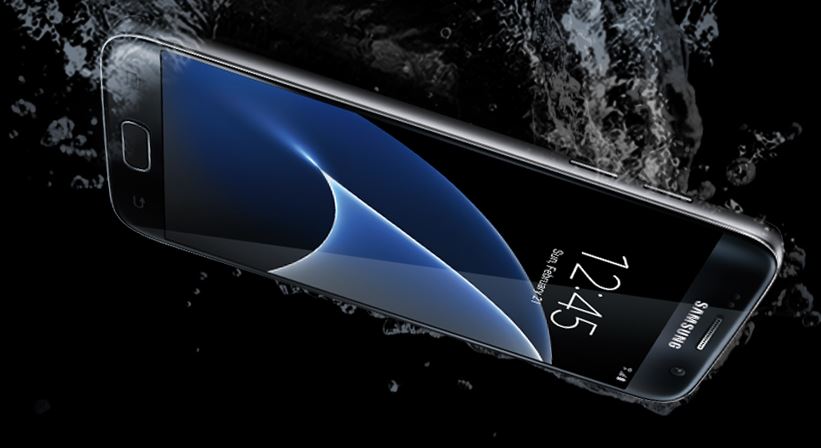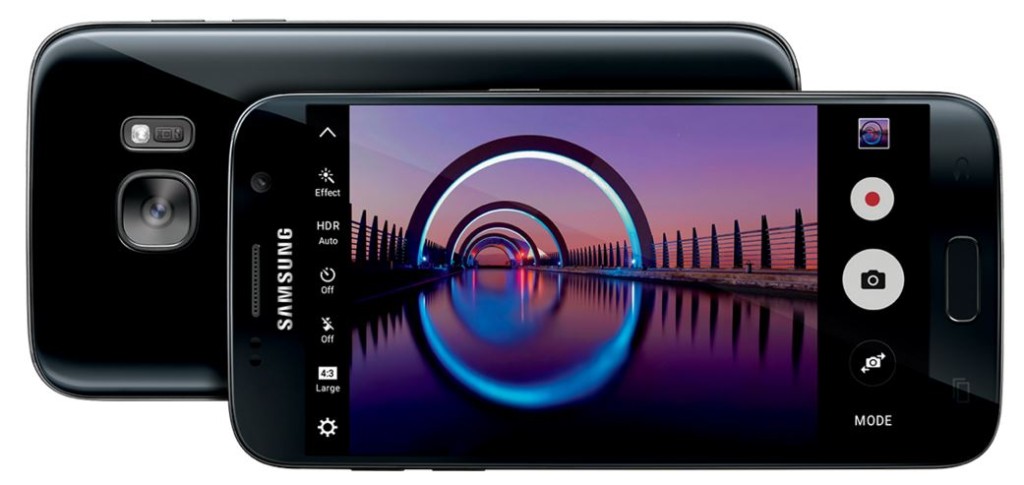Mobile World Congress in Barcelona came and went and two phones are the real stars of the show. The Galaxy S7 by Samsung and the LG G5 which are both of the most anticipated Android phones ever. The Korean companies go head to head on features and looks and while they are close in specs they differ a lot when it comes to camera specs and the fine details.
The LG G5 disappoints by only being able to record at 1080p 60fps which tops it’s frame rate recording. This is even a step down from the LG G4 which recorded 120fps at 720p. The LG G5 as a slow motion phone is now off the table. Which leaves us with the Samsung Galaxy S7 and it’s near twin the Galaxy S7 Edge with a curved screen but same specs.
Galaxy S7 Camera Specs:
| Rear Lens | 12 MP, f/1.7, 26mm, phase detection autofocus, OIS, LED flash | |
| Sensor and Software | 1/2.6″ sensor size, 1.4 µ pixel size, geo-tag, touch focus, face detection, Auto HDR, panorama | |
| Video | 2160p@30fps, 1080p@60fps, 720p@240fps, HDR, dual-video rec. | |
| Secondary | 5 MP, f/1.7, 22mm, dual video call, Auto HDR |
Samsung has finally taken the step to 240fps and equals the iPhone 6s specs in the 720p HD resolution but trails it in 1080p where it maxes out at 60fps 1920px * 1080px. However the Samsung has a more advanced sensor with predictive AF which is really the big upgrade in this camera aside from reducing the Megapixels from 16 in the Galaxy S6 to 12 in the Galaxy S7. Reducing the Megapixels should yield better low light performance, more dynamic range and better overall picture and video quality as more light reaches the sensor. Artifacts should be reduced due to a better image processor inside as well.

The other big change is that the phone is IP68 rating for water and dust resistance which is explained by Michele Beyer here:
-
The first digit, the number “6”, means that the instrument has total dust ingress protection.
-
The second digit, the number “8”, means that the instrument is suitable for permanent submersion in water.
As to the validity of those claims we expect it to be able to withstand 30 minutes immersion in 3 ft or 1 meter of water. After that it could potentially leak water and have problems as other phones before have shown with similar rating. We do not recommend it for slow motion water shoots unless it is in shallow water and for a few seconds at a time.
While there are not many slow motion samples yet from the Galaxy S7 we have found a few so you can judge the quality of the slow motion 720p 240fps mode. We find it at first look to be competitive but not better than the iPhone 6s or Nexus 6p as those phones offer very good quality plus they also shoot 1080p at 120fps which the Galaxy S7 lacks. Samples Below:
Samsung Galaxy S7/S7 Edge – SlowMo 240fps Video:
Galaxy S7 Edge SlowMo Swing: ReDone by EuroTech:
https://www.youtube.com/watch?v=g5aUNY3YnGk
Slow Motion บน Galaxy S7 by droidsans:
Samsung Galaxy S7: test camera by Technology Today:
https://www.youtube.com/watch?v=C3wSgPIvmUc
Samsung Galaxy s7 vs LG g5 slow motion camera comparison fire dance by Lauron Pandey:
https://www.youtube.com/watch?v=EZRr33e9Jd8
While the Galaxy S7 is a worthy upgrade from the Galaxy S5 for instance it is hardly a big upgrade for S6 users performance wise. However it is clear that high frame rates, SD card support and camera improvements continue to be at the forefront of the priorities at the phone makers innovation labs.
We will rank the Galaxy S7 as a slow motion phone later on when more samples are available.
The Galaxy S7 is already found at your wireless carrier for pre order and some have already appeared for sale at places like Amazon.com here for a wide range of options and prices!
More info on the Galaxy S7 and S7 Edge at Samsung Here!


That’s sad.
Let’s hope the Note 6 to bring 2160p@60fps and DCi-4K@48fps‼
I wish that framerate could be choosen freely on the S7.
I can record 1080p@60fps, but no 720p@60fps.
I can record 720p@240fps, but not 720p@120fps.
I can record 2160p@30fps, but not 2160p@20fps. ﴾20fps is no standard, but a good balance between stuttering 16 fps and space consumption.﴿
Theoretically, the S7 is able to record in those resolutions, but the software does not offer that possibility.
When I’m low on storage, which should actually be rare with MicroSD, I have to choose a lower resolution.
However, I would always try to keep free storage, to make sure, that I’m far away from getting into problems with space storage emergency, by moving data somewhere else such an external data storage, which could be USB-OTG or a hard drive.
Space storage emergency is a problem, that could hit anybody at a bad time. When there’s something, that I *have* to record, I’m toast, if I fail on space storage. Additionally, the feeling of running out of space storage is unpleasent.
If space storage gets full on the internal storage, some applications get into trouble. This leads to unpleasent data loss in rare case. It happened to me on the Galaxy Note 3 SM-N9005, where Samsung’s stock browser erased my fifty-tab-session and just kept the last 33 Tabs.
That’s another reason to get phones with maximum internal storage. MicroSD can’t be used for everything, but it’s very useful too. One of my classmates had an iPhone 5s with just 16 Gigabytes. He always had problems with battery life and storage on some class excursions. Nobody had a powerbank, the battery was not removable, and I had a MicroSD, but his iPhone is unable to read it. Now, he has one with 64 GB.
Back to topic:
It is a bit disappointing, that the S7 is not capable of recording in 1080p@120fps. In this resolution, the same number of pixels are read per second, which it also gets at 2160p@30fps. 248832000 Pixels per second. So theoretically, a Note 3 from 2013 should be capable of record 1080p@120fps, because the processing speed and performance is enough to process that number of pixels in a second. The sensor reading speed should be enough and the processing power anyway.
That’s the same kind of ridicolous software limit like the Galaxy burst shot limit. It is 100 on the S7, which is actually not bad. But Xperia and Apple have no limits.
Until 2015, the limit was still at thirty. When I saw the S6 in the tech store for the first time, I held the shutter button, I saw the number climbing (there was no (xx/30) like previous phones, but just the number xx of the current shot in row, so I expected that they finally smashed this limitation.) But then it stopped at thirty. I had to facepalm. It did reload very fast, but it’s not an unlimited continious shot as known from iPhone and Xperia, where the counter shows 999+, if 1000 is reached, and it continues until the storage is full, the device is overheating, or the battery is weak. (this was the same day, where I realized, that the S6 records the slow motion with sound and in realtime! That was glorious! And finally, there is a torch in the quick toggle panel, which was actually messed up on the S6 but recnetly fixed with the Marshmallow update.) But the S5-G901F and the tech-shop-demo model G900X have a limit of 1000! That was beautiful. It was hanging at some places, and sometimes, the burst speed got lower a bit (possibly caused through device heating), and sometimes, it stopped (probably because my finger did slide off the tiny S5 shutter key, which has only 1/3 of the size of the SGN3 shutter button), but when I used the volume keys and held it for three minutes, I maxed out the 1000 shots in row on a G900X in the tech store.
The S7 finally removes the 4K 5Minute limit however. Before of that, some XDA contributors made some applications to bypass this limit, but now it’s finally supported by the pre-installed software.
Sorry for off-topic: A minor problem, which users are facing with the marshmallow update, is that the flashlight in the quick toggle panel refuses to operate when the camera is running. That’s too bad. But some third-party-external apps are able to bypass this limitation as much as ASR and Smart Voice Recorder are able to continue recording audio from the microphones, when multimedia applications are opened. But this makes it impossible for other applications to use the microphones. Google speech input and video recording will fail while photos can still be taken.
Sorry for this long comment! It was not supposed to get that long!
But thank you for this article! There was something, which I forgot to mention in this comment, but it is tooooo looong anyway, so there is no need to make it even longer.
We appreciate the time you took to write this. It should be of interest to our readers. We agree that 120 1080p is a big oversight. Could it be software crippling? It may have to do with the sensor as well. Not all sensors support windowing in the same pixel throughput as other modes. It may be that while 4k 30p works out fine; the 1080p 120fps windowing is not supported in the hardware. Funny however that 720p 240 is. The Note should at least match these specs with maybe 4k at 60p if they want a great spec to be released with that brand.